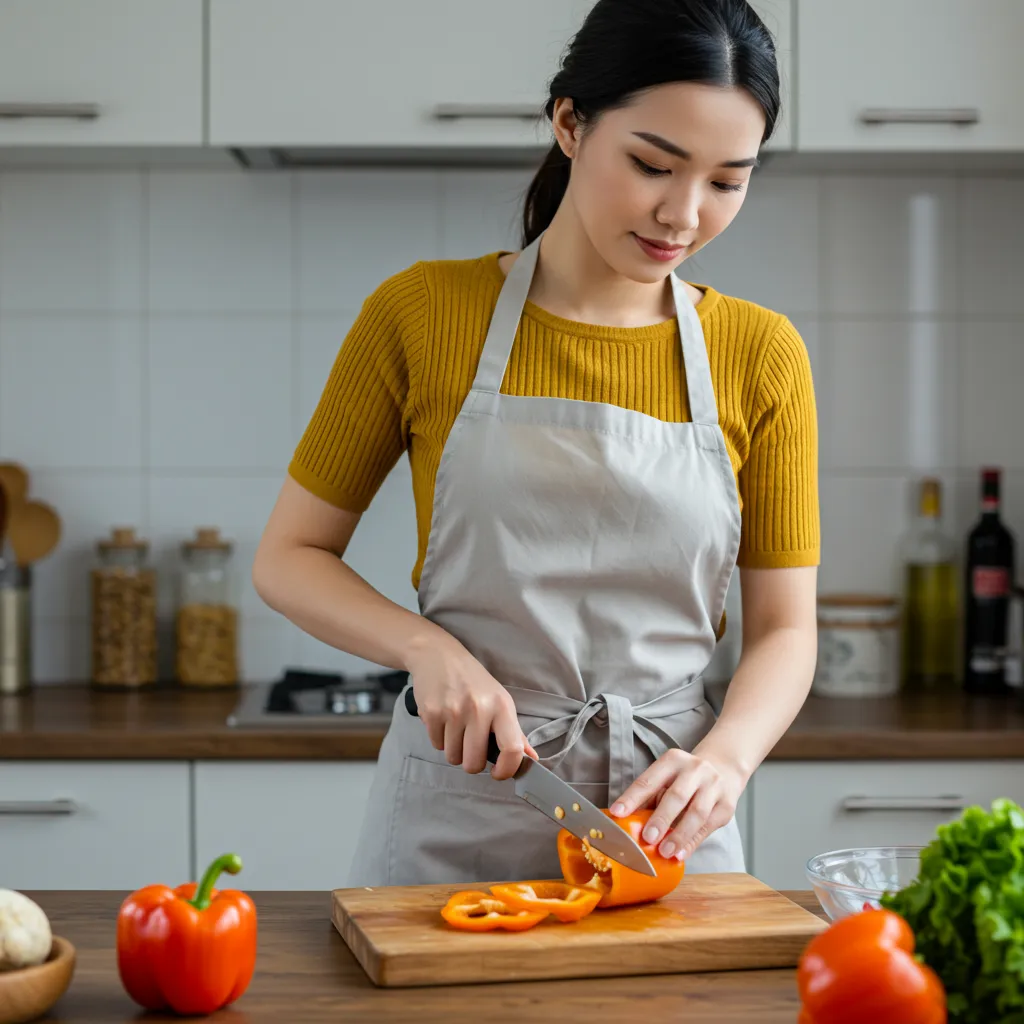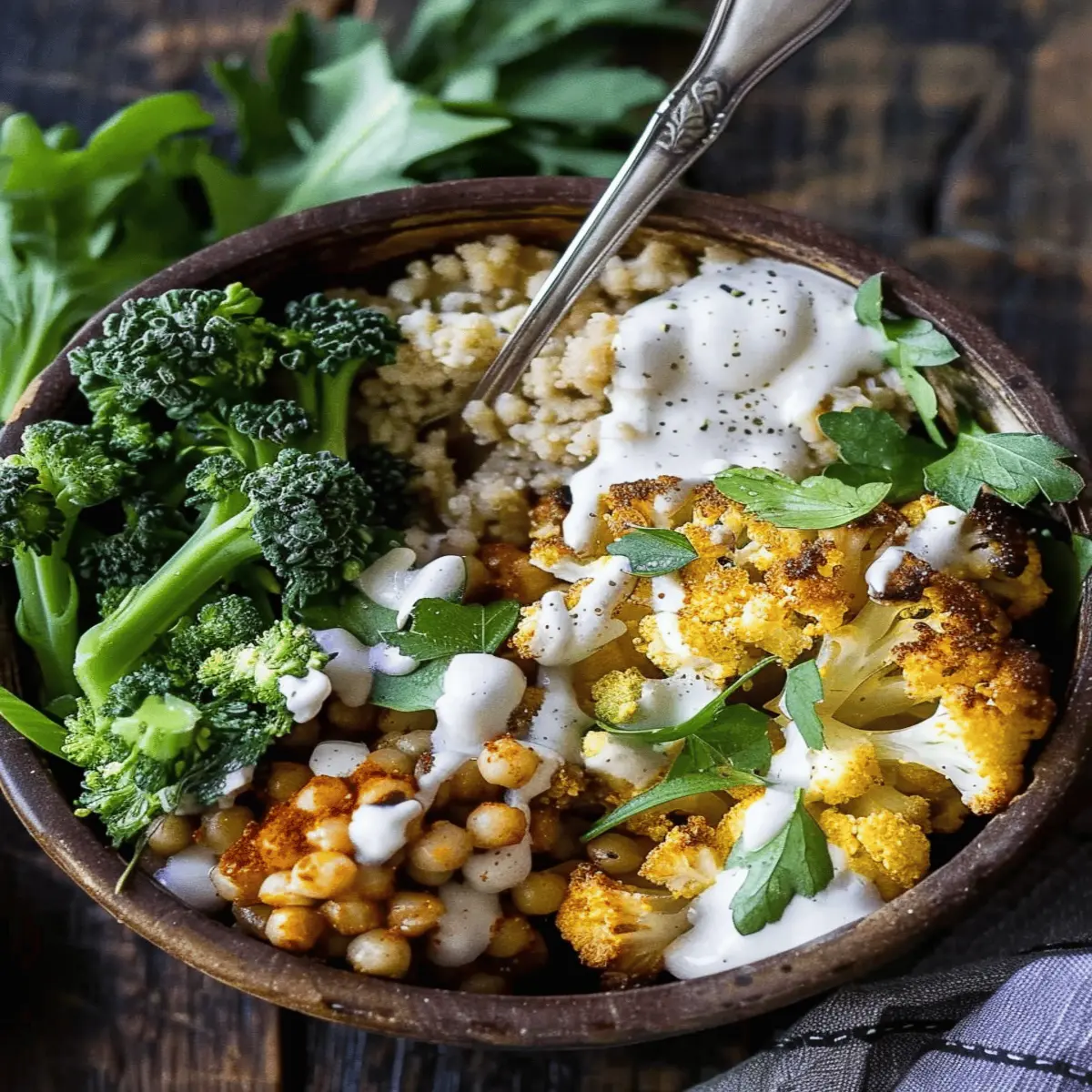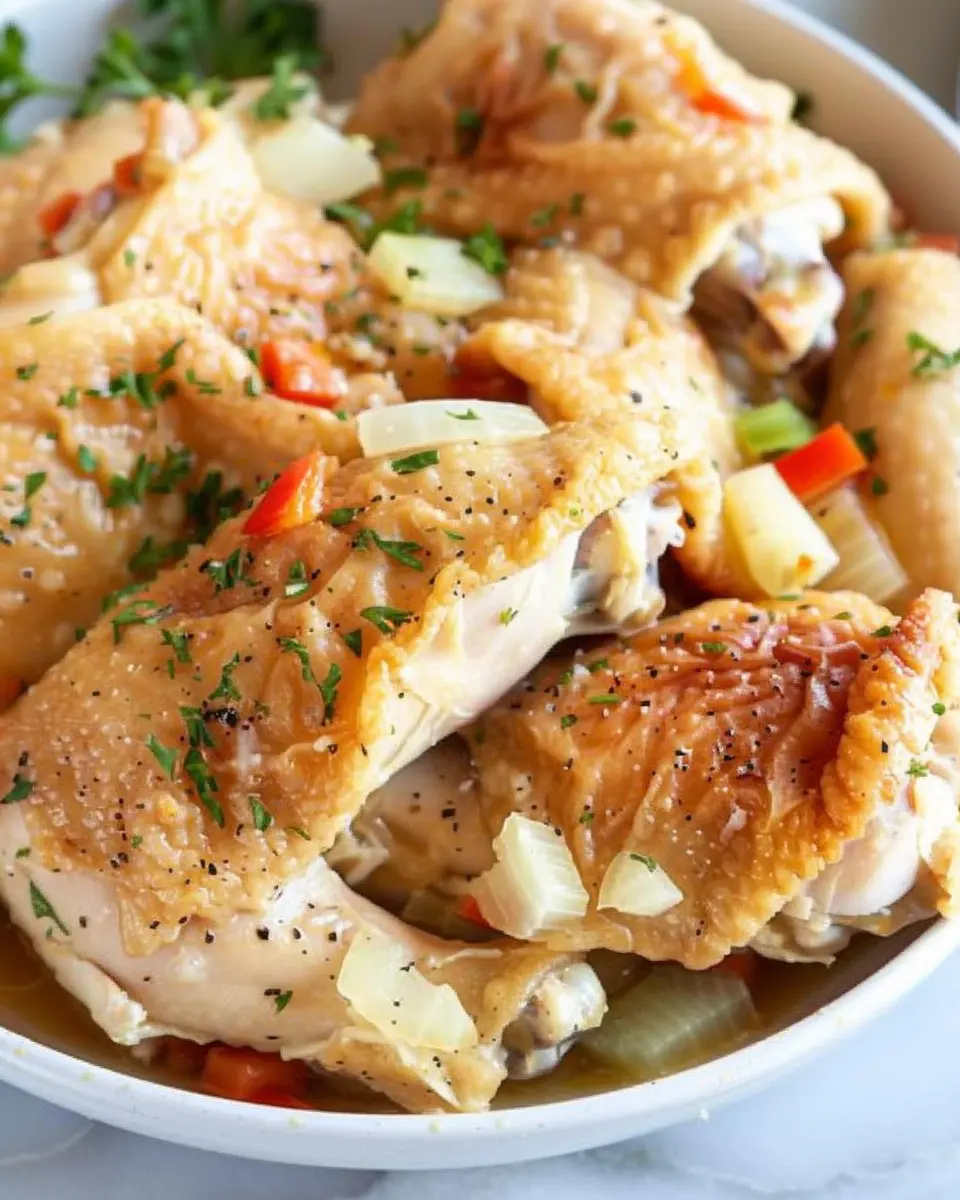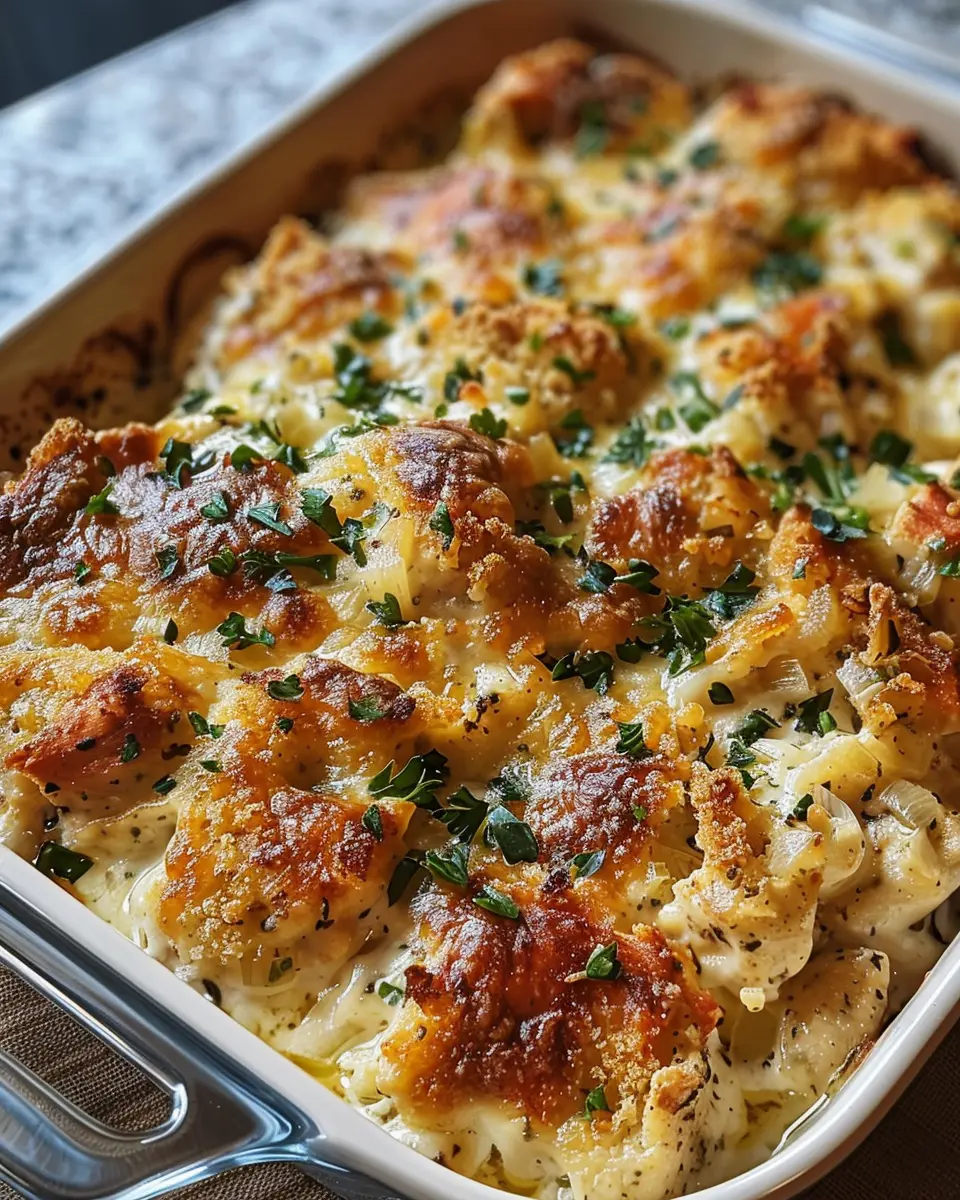Introduction to Veggie Bowls
If you’ve ever found yourself staring blankly into your fridge after a long day at work, you’re not alone. Young professionals often juggle demanding schedules, and finding the time to cook can feel overwhelming. Enter veggie bowls—the perfect meal solution that combines nutrition, convenience, and creativity all in one bowl.
Why Veggie Bowls Fit Your Busy Lifestyle
Imagine this: you’ve just finished a long day, and the last thing you want to do is spend hours preparing dinner. But with veggie bowls, you can whip up a delicious meal in 30 minutes or less! These versatile bowls allow you to throw in whatever you have on hand, making them an excellent way to clear out leftovers and avoid food waste.
-
Quick Preparation: Many veggie bowl recipes require no cooking at all. Just chop, mix, and enjoy! This saves you valuable time during busy weekdays.
-
Endless Combinations: The beauty of veggie bowls is their flexibility. You can customize them to your taste preferences and dietary needs. Whether you’re vegan, gluten-free, or just looking to eat more greens, there’s a veggie bowl for you. Need some inspiration? Check out this guide for meal planning tips.
-
High in Nutrients: According to the CDC, only about 1 in 10 adults eat enough fruits and vegetables. A colorful veggie bowl can help you hit your daily intake goals while providing essential vitamins and minerals. Incorporating a variety of veggies boosts not only your health but might also positively impact your mood.
-
Meal Prep Friendly: Planning ahead? Make your veggie bowls in advance for the week, storing each component separately. This way, you can mix and match ingredients to keep your meals interesting.
With veggie bowls, you’re not just eating; you’re creating a personalized experience that nourishes both your body and your taste buds. So, next time you’re in a rush, skip the fast-food drive-thru and give a veggie bowl a try. You’ll be surprised at how easy and satisfying a homemade meal can be!
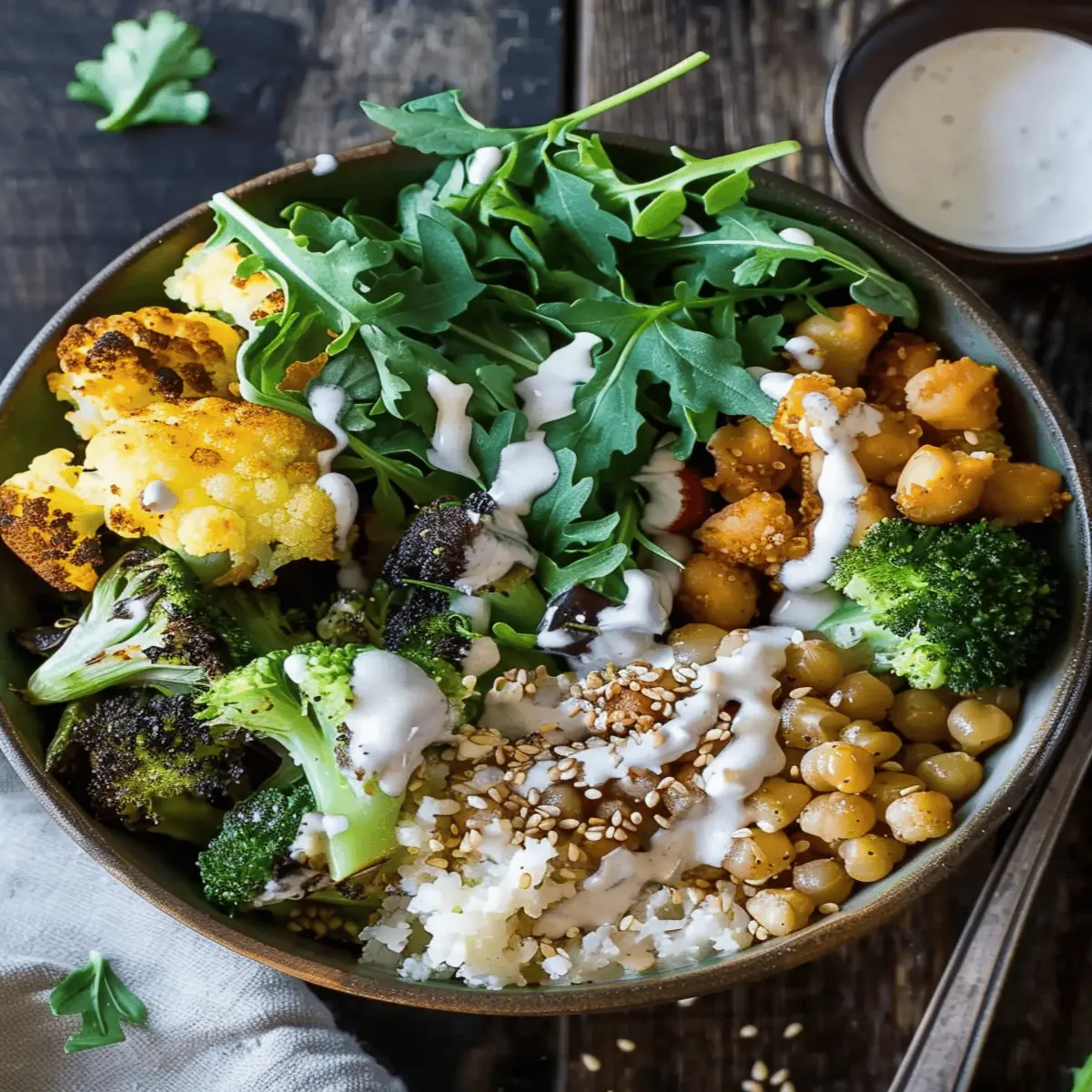
Ingredients for Veggie Bowls
Essential components for a balanced veggie bowl
Creating the perfect veggie bowl starts with a solid foundation. Think of it as building a colorful masterpiece! Here’s what you need for a well-rounded meal:
- Base: Start with a grain or green like quinoa, brown rice, or leafy greens. These offer essential nutrients and healthy carbohydrates.
- Protein: Incorporate plant-based proteins such as chickpeas, black beans, or tofu. Protein is key for satiety and muscle repair.
- Vegetables: Load up on seasonal veggies—bell peppers, broccoli, carrots, or sweet potatoes provide vitamins, minerals, and vibrant colors.
- Dressing: Choose a light vinaigrette or a creamy tahini sauce to tie everything together. A great dressing can elevate the flavors tremendously!
Optional toppings to elevate your creation
Don’t stop at the basics! Adding optional toppings can make your veggie bowls special. Consider these ideas:
- Nuts and Seeds: Almonds, walnuts, or pumpkin seeds deliver crunch and healthy fats.
- Fresh Herbs: Chopped cilantro, parsley, or basil add freshness and aroma.
- Avocado: Creamy avocado slices or guacamole offer richness and flavor depth.
Visit the Nutrition Source for more insights into healthy ingredients! Now, go ahead and express yourself—each veggie bowl can tell a unique, delicious story.
Step-by-Step Preparation of Veggie Bowls
Creating delicious and nutritious veggie bowls can transform your meal prep routine into something exciting and flavorful. Whether you’re a seasoned cook or just starting, these vibrant bowls are customizable to your taste preferences and dietary needs. Let’s explore the steps to prepare them seamlessly.
Gather your ingredients
The first step is to gather your ingredients. You can truly unleash creativity here; the possibilities are endless! Here’s a handy list to get you started:
-
Base: Choose from grains like quinoa, brown rice, or farro. Leafy greens such as spinach or kale also work beautifully. Legumes like chickpeas or black beans are great protein-packed options too.
-
Vegetables: Aim for a mix of colors and textures—think bell peppers, carrots, zucchini, and sweet potatoes. Seasonal veggies often taste best and are fresher.
-
Toppings: Consider adding nuts, seeds, or cheese (like feta or goat cheese). Fresh herbs like cilantro or parsley can brighten things up.
-
Dressing: A good dressing can take your veggie bowls to the next level. Try to whip up a simple vinaigrette or consider store-bought options like tahini dressing or balsamic glaze.
Don’t forget to check out reputable sites like EatingWell for ideas on seasonal ingredients!
Prepare your base (grains, greens, or legumes)
Once you have your ingredients, it’s time to focus on the base.
-
For grains, rinse them under cold water before cooking to remove any excess starch. Most grains will cook in a simple 2:1 ratio of water to grain. For example, two cups of water for one cup of quinoa.
-
If you’re opting for leafy greens, wash and dry them thoroughly. You can serve them fresh and raw or sauté them lightly for a softer texture.
-
For legumes, if you’re using canned options, just rinse thoroughly; if you’re cooking dried beans, soak them overnight for better digestibility, and simmer until tender.
With a robust base in place, you’re setting the stage for a satisfying veggie bowl.
Chop and roast your vegetables
Now for the fun part—chopping and roasting your chosen vegetables!
-
Start by preheating your oven to 425°F (220°C). Roasting veggies enhances their natural sweetness and creates a lovely caramelization.
-
Chop your veggies into uniform pieces for even cooking. For example, cut bell peppers and zucchini into bite-sized cubes while slicing sweet potatoes into thin rounds.
-
Toss your vegetables in olive oil and season with salt, pepper, and your favorite herbs (consider rosemary or thyme for extra flavor).
-
Spread them on a baking sheet in a single layer and roast for about 20-30 minutes, flipping halfway through until they are golden and tender.
Assemble the veggie bowl
With your base and roasted vegetables ready, it’s time to assemble your veggie bowl.
-
Start by placing a generous scoop of your chosen base in a bowl. This might be quinoa, a mound of greens, or a scoop of hearty lentils.
-
Next, add your roasted vegetables, layering them prettily on top.
-
To boost the flavor, add a handful of toppings such as nuts or seeds. You can even mix in some fruits like avocado or pomegranate seeds for an unexpected burst of flavor.
Personalize each bowl to your liking; considering different combinations can make meal prepping more exciting throughout the week.
Drizzle with dressing and garnish
You’re almost there! The final touch is the dressing and garnish.
-
Drizzle your choice of dressing generously over the veggie bowl. A tangy lemon tahini sauce or a spicy sriracha mayo can elevate the entire dish.
-
Finally, don’t forget to garnish with fresh herbs, a sprinkle of seeds, or even a dash of nutritional yeast for a cheesy flavor without the dairy.
By following these steps, you’re not only creating stunning veggie bowls, but you’re also embracing a healthier lifestyle. Did you know that eating a greater variety of vegetables can lead to better health outcomes and increased nutrient intake? It’s true! So dig in and enjoy every vibrant bite!
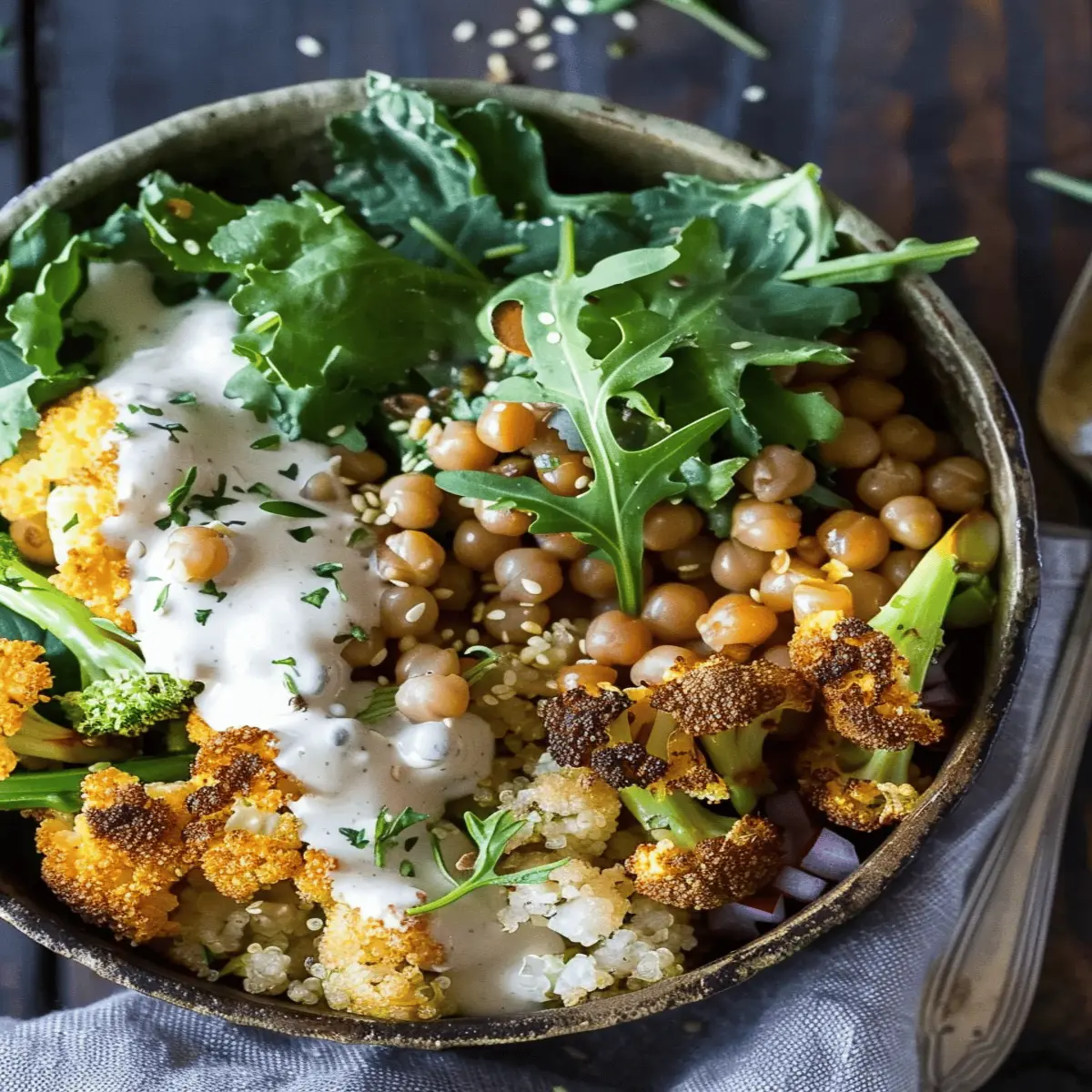
Variations on Veggie Bowls
Veggie bowls are wonderfully versatile, allowing you to create a satisfying meal customized to your palate and dietary needs. Let’s explore three exciting variations that you can whip up in no time!
Mediterranean Veggie Bowl
A Mediterranean veggie bowl is a vibrant blend of flavors and colors. Start with a base of fluffy quinoa or brown rice, then layer in:
- Chopped cucumbers
- Diced tomatoes
- Kalamata olives
- Roasted red peppers
- Crumbled feta cheese
Drizzle some olive oil and a spritz of lemon juice for a refreshing finish. This bowl not only tantalizes your taste buds but also packs a nutritional punch with antioxidants and healthy fats. For more inspiration, check out Mediterranean diet benefits which highlight its positive effects on heart health and longevity.
Asian-Inspired Veggie Bowl
For a taste of Asia, try an Asian-inspired veggie bowl. Begin with a base of sushi rice or soba noodles, then add:
- Shredded cabbage
- Sliced bell peppers
- Grated carrots
- Edamame
Top it off with sesame seeds and a drizzle of soy sauce or a homemade peanut dressing. This bowl captures the umami flavors that make Asian cuisine so addictive, offering a delightful balance of crunch and creaminess. Curious about the specific health benefits of these ingredients? Check out this guide on Asian veggies for more insights.
Southwest-Style Veggie Bowl
Craving something a little bolder? The Southwest-style veggie bowl has got you covered. Fill yours with:
- Black beans
- Roasted corn
- Avocado slices
- Diced jalapeños
Serve over a bed of cilantro-lime rice, and finish with a dollop of Greek yogurt or salsa. This hearty bowl packs in protein from the black beans and tons of flavor, making it perfect for an energizing lunch or a filling dinner.
Experimenting with different cultures’ flavors in your veggie bowls is an exciting way to keep mealtime fresh. What combination will you try next?
Cooking Tips and Notes for Veggie Bowls
How to Keep Veggies Fresh Longer
One of the secrets to creating delicious veggie bowls is starting with fresh ingredients. Here are some simple tips to ensure your veggies stay crisp and vibrant:
-
Proper Storage: Store vegetables in a moisture-controlled environment. For leafy greens, place a paper towel in the bag to absorb excess moisture. This prevents wilting and keeps them fresh longer.
-
Temperature Matters: Keep your veggies in the refrigerator crisper drawer, which is designed to control humidity and temperature. This space is ideal for maintaining the quality of your veggie bowl ingredients.
-
Avoid Ethylene Producers: Some fruits, like bananas and avocados, release ethylene gas, which can speed up spoilage in nearby veggies. Store them separately to prolong freshness.
-
Use Airtight Containers: If you’ve chopped vegetables in advance, store them in airtight containers to reduce exposure to air, preserving their crunch.
By following these tips, you’ll ensure that the vibrant flavors of your veggie bowls shine through every time! For more expert advice on vegetable storage, check out resources from The Produce Marketing Association or EatFresh.
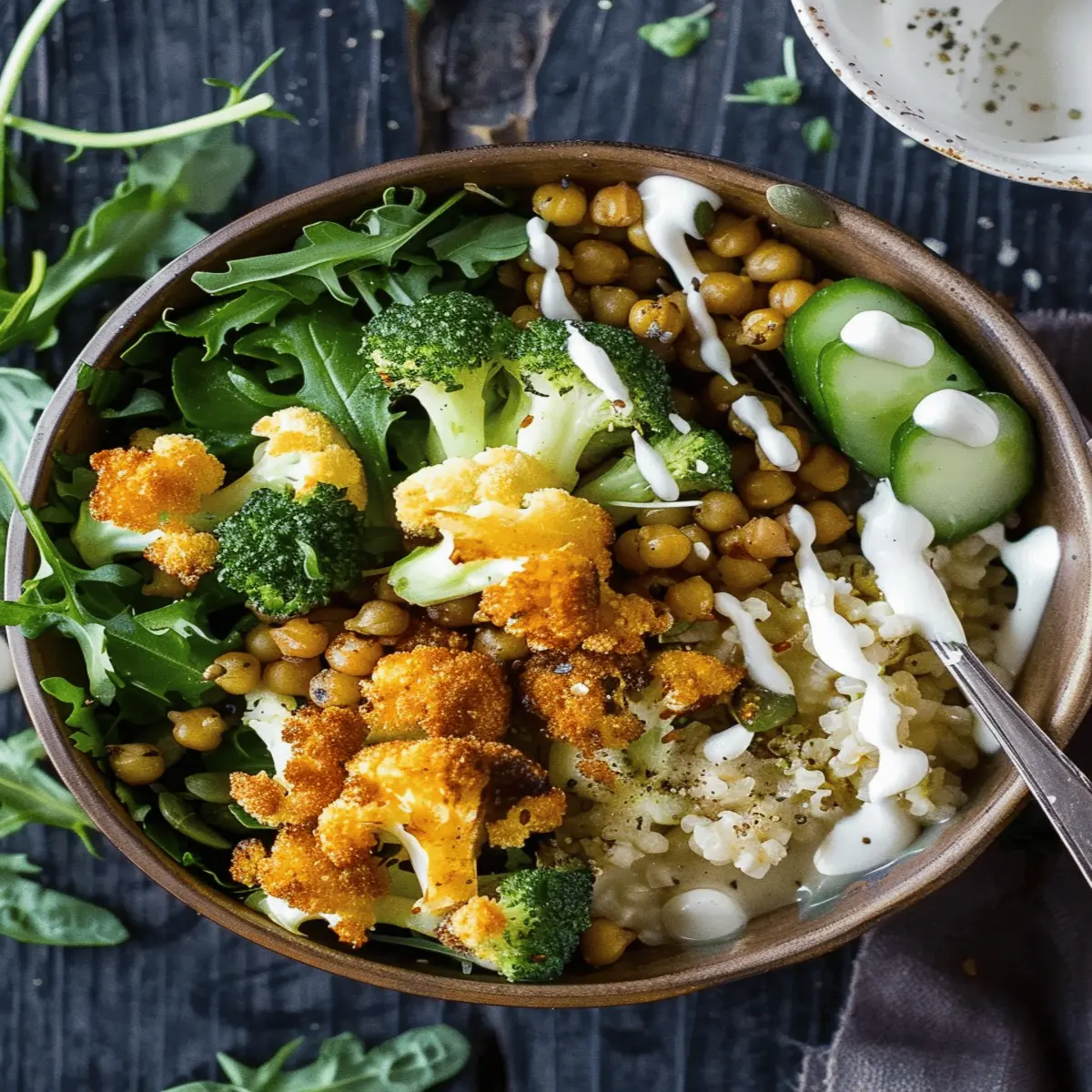
Serving Suggestions for Veggie Bowls
Pair Your Veggie Bowl with a Protein
One of the best things about veggie bowls is how versatile they are! To turn your bowl into a more balanced meal, consider adding a protein source. Here are some tasty options:
- Grilled Chicken or Turkey: Lean meats can add a nice depth of flavor.
- Tofu or Tempeh: These plant-based proteins soak up dressings beautifully, giving your bowl an umami kick.
- Chickpeas or Black Beans: Canned or cooked, they’re a hearty addition that boosts fiber and protein.
Whether you’re preparing for lunch or dinner, a well-rounded veggie bowl will keep you satisfied.
Meal-Prepping with Veggie Bowls
Making veggie bowls in advance is a game changer! Here’s how to get started:
- Cook Grains in Batches: Quinoa, brown rice, or farro can be made ahead and stored.
- Chop Vegetables for the Week: Spend a little time on the weekend to dice, slice, and mix your favorite veggies. This makes assembly a breeze.
- Experiment with Dressings: Create a few different dressings to keep things exciting. You can find some inspiration from Love & Lemons for fresh ideas!
With these tips, meal-prepping becomes not just efficient but also fun! Aren’t you excited to create your personalized veggie bowl?
Time Breakdown for Veggie Bowls
Preparation Time
Preparing your veggie bowls is quick and easy! You’ll spend about 15-20 minutes chopping vegetables, measuring out grains, and gathering your favorite toppings. To save even more time, consider prepping ingredients in advance or purchasing pre-chopped veggies—fresh options can often be found at your local grocery store.
Cooking Time
The cooking time varies depending on your choice of grains and proteins. On average, expect to spend around 15-30 minutes cooking quinoa, rice, or beans. If you decide to roast any veggies or sauté greens, add an extra 10-15 minutes to allow those flavors to develop.
Total Time
In total, you’re looking at about 30-50 minutes from start to finish. This makes veggie bowls a fantastic option for busy weeknights when you still want something nutritious and wholesome. Plus, they’re endlessly customizable, meaning you can adapt the recipe based on what you have at hand—perfect for the young professional lifestyle!
For more on meal prep efficiency, check out this guide that can help streamline your cooking process.
Nutritional Facts for Veggie Bowls
When it comes to veggie bowls, understanding their nutritional benefits can elevate your meal prep game. Let’s dive into the essentials.
Caloric Breakdown
Typically, a serving of veggie bowls ranges from 250 to 500 calories, depending on the ingredients used. The base, often whole grains or leafy greens, contributes to the caloric content, while add-ins like nuts or oils can boost it further. To keep things light, consider opting for lighter dressings, or even a splash of lemon juice!
Key Vitamins and Minerals
These vibrant bowls are powerhouses of nutrition. They often contain:
- Vitamin A: Found in carrots and spinach, this vitamin is essential for vision and immune function.
- Vitamin C: Bell peppers and broccoli provide a hefty dose, supporting skin health and immunity.
- Fiber: By including legumes or whole grains, you’re getting enough fiber to aid digestion and keep you feeling full longer.
For a deep dive into the nutritional profiles of veggie bowls, check out the USDA FoodData Central for detailed insights. Incorporating a variety of colors and textures not only makes your meal visually appealing but ensures you’re getting a range of nutrients. So, what’s your favorite ingredient to add to a veggie bowl?
FAQs about Veggie Bowls
How can I make my veggie bowls more filling?
If you find your veggie bowls lacking in substance, consider adding heartier ingredients. Proteins like chickpeas, quinoa, or tofu can enhance both flavor and satiety. Additionally, introducing healthy fats—think avocados, nuts, or seeds—can create a richer texture that keeps you fuller longer. To elevate your bowl, try combining grains and legumes; they not only add depth but also create a complete protein source, which is crucial for plant-based diets.
What’s the best dressing for veggie bowls?
The right dressing can take your veggie bowls from ordinary to extraordinary! A simple lemon-tahini dressing or a tangy balsamic vinaigrette often works wonders. For a creamy touch, a cashew or avocado-based dressing can complement your fresh vegetables beautifully. You might want to check out this great resource on homemade dressings to get inspired!
Can I prepare veggie bowls in advance?
Absolutely! In fact, prepping your veggie bowls ahead of time can save you valuable minutes during a busy week. Chop your veggies and cook your grains in advance, then store them in airtight containers in the fridge. When you’re ready to eat, just mix everything together, add your dressing, and voilà! However, for optimal freshness, it’s best to add delicate toppings, such as avocado or herbs, just before serving.
By addressing these commonly asked questions, you can transform your healthy veggie bowls into something truly satisfying and delicious!
Conclusion on Veggie Bowls
Recap of the Benefits and Encouragement to Try the Recipe
In summary, veggie bowls are not just a meal; they’re a versatile canvas for your culinary creativity. Packed with essential nutrients, they offer significant health benefits, including increased energy and improved overall wellness. Incorporating a mix of colorful vegetables, healthy fats, and grains can help you achieve a balanced diet with ease.
I encourage you to try crafting your own veggie bowl—it’s surprisingly simple and incredibly satisfying. Embrace seasonal produce and let your imagination run wild! Check out resources like Nutrition.gov for more inspiration or tips on maximizing your veggie intake. Dive into the world of veggie bowls and savor the delicious journey that awaits you!
Print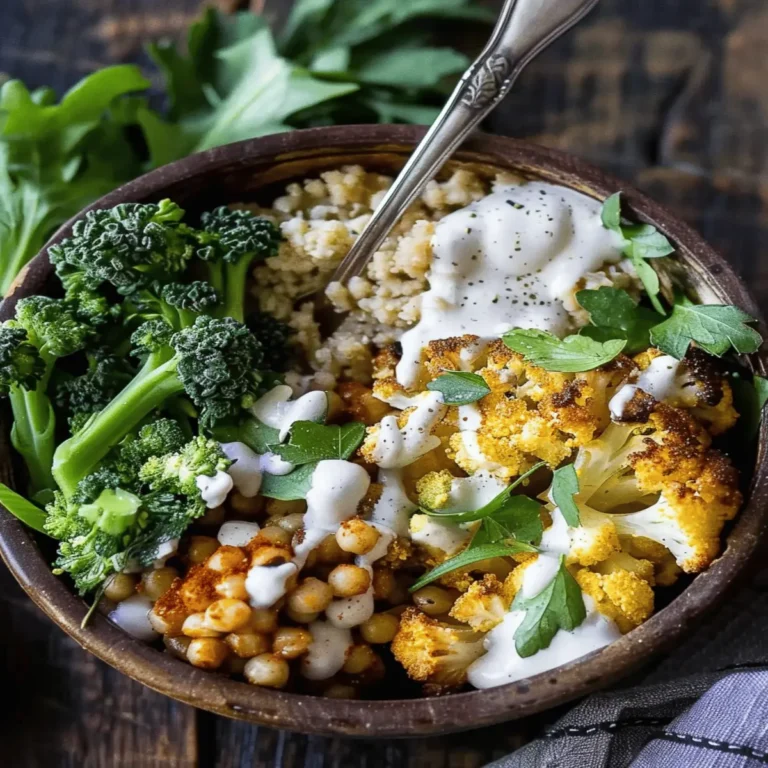
Veggie Bowls: Easy, Colorful Meals That Brighten Your Day
Discover how to create vibrant and healthy veggie bowls that are both easy to prepare and delicious to eat.
- Total Time: 30 minutes
- Yield: 4 servings 1x
Ingredients
- 1 cup quinoa
- 2 cups vegetable broth
- 1 cup cherry tomatoes, halved
- 1 cucumber, diced
- 1 bell pepper, diced
- 1 avocado, sliced
- 2 tablespoons olive oil
- 1 tablespoon lemon juice
- salt to taste
- pepper to taste
Instructions
- Rinse the quinoa under cold water and then combine it with vegetable broth in a saucepan. Bring to a boil, then reduce heat, cover, and simmer for 15 minutes or until all the liquid is absorbed.
- Fluff the quinoa with a fork and let it cool.
- In a large bowl, combine cooled quinoa, cherry tomatoes, cucumber, bell pepper, and avocado.
- Drizzle olive oil and lemon juice over the top and season with salt and pepper.
- Toss gently to combine and serve immediately or chill in the fridge until serving.
Notes
- For added protein, feel free to include chickpeas or grilled chicken.
- Experiment with different vegetables based on what’s in season.
- Prep Time: 15 minutes
- Cook Time: 15 minutes
- Category: Salads
- Method: Boiling, Mixing
- Cuisine: Global
- Diet: Vegetarian
Nutrition
- Serving Size: 1 bowl
- Calories: 300
- Sugar: 2g
- Sodium: 300mg
- Fat: 15g
- Saturated Fat: 2g
- Unsaturated Fat: 10g
- Trans Fat: 0g
- Carbohydrates: 36g
- Fiber: 8g
- Protein: 8g
- Cholesterol: 0mg
Keywords: Veggie Bowls, Healthy Meals, Easy Recipes
